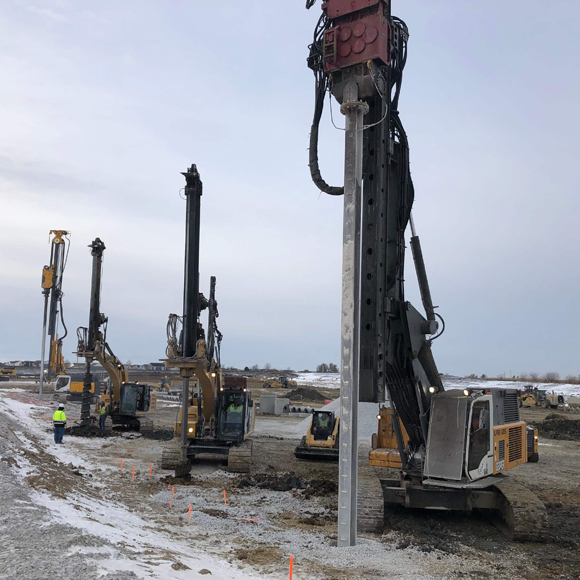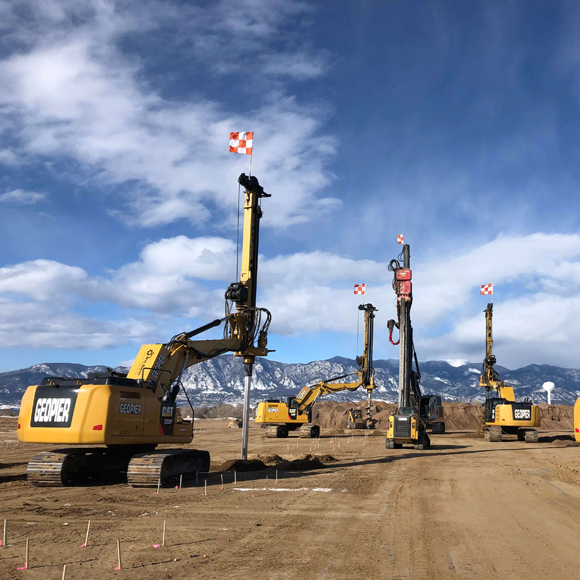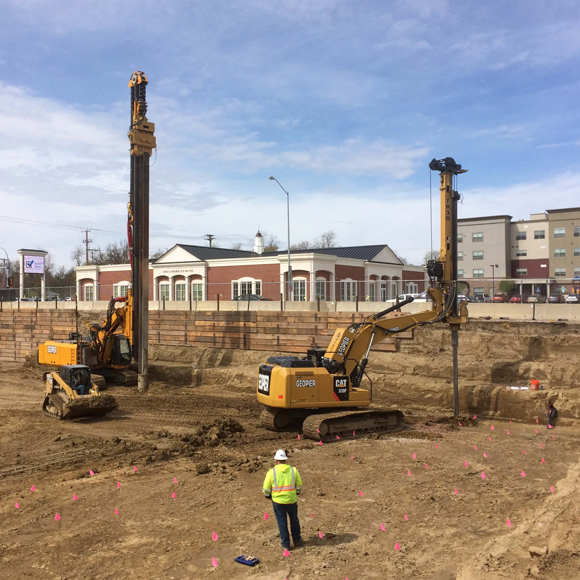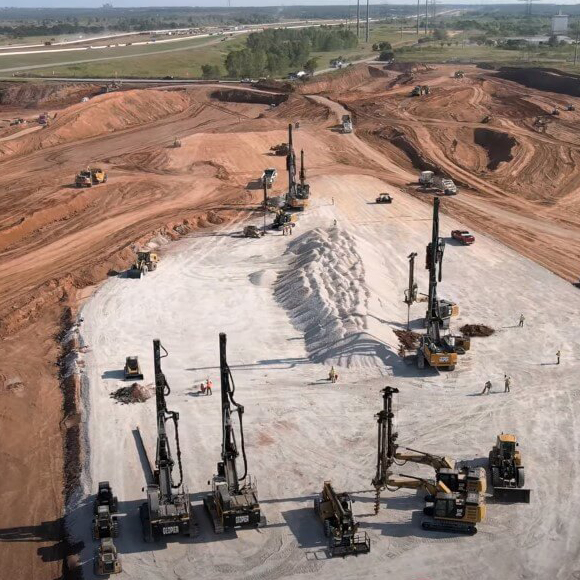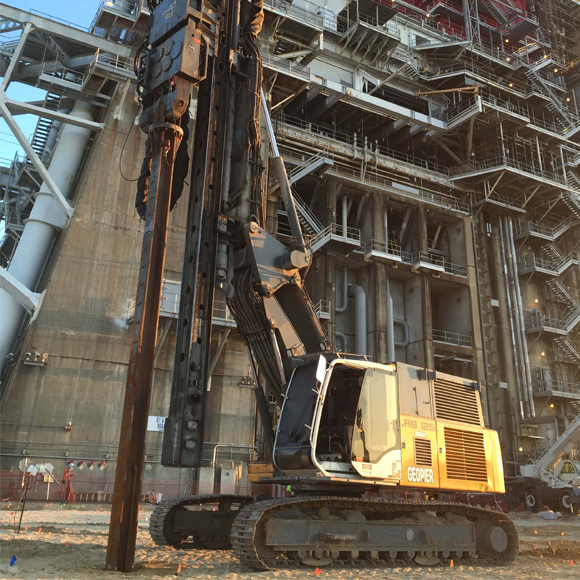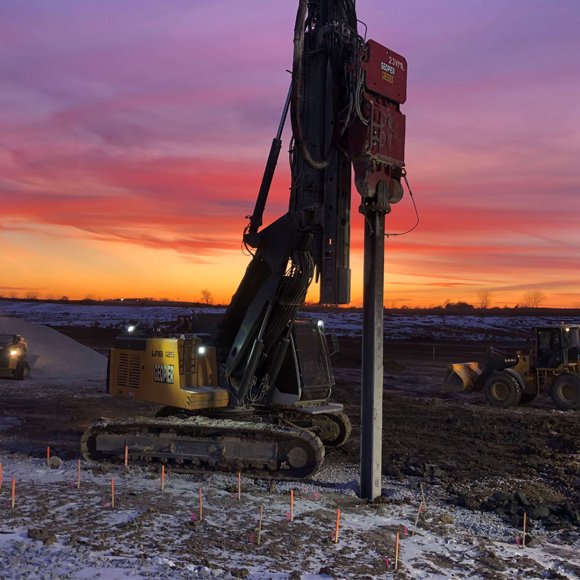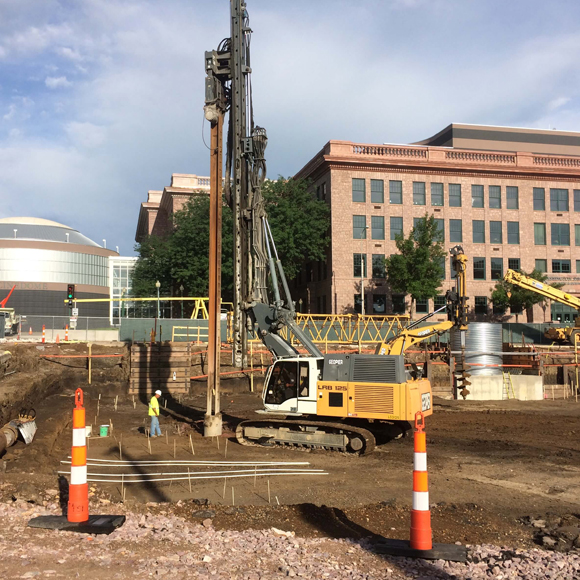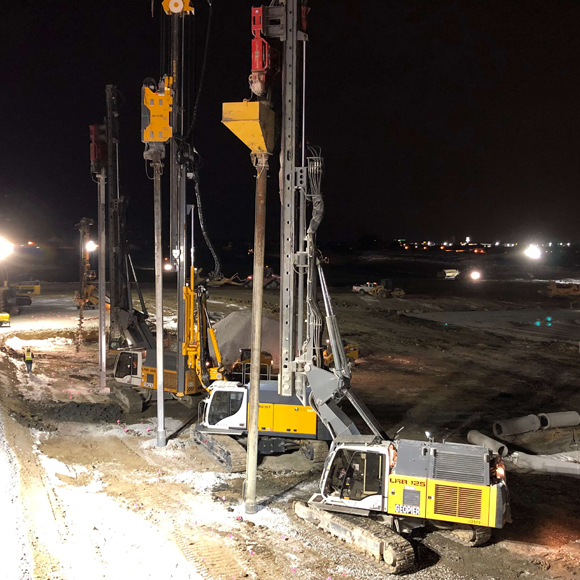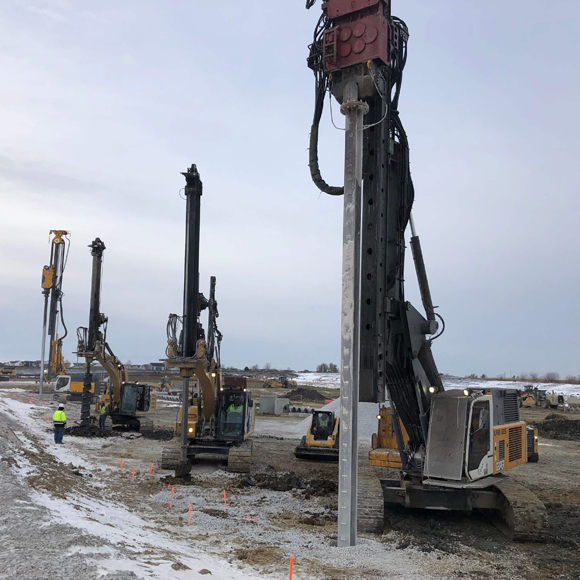
X1® System
- Ideal for non-caving soils
- Rapid installation (schedule savings)
- 20-50% savings versus deep foundations and over-excavation
- Minimal spoils and haul-off costs
The Geopier X1® system is our newest “drill and fill” solution. This system is ideal for non-caving soils that stay open during drilling but can also be used as a ground displacement system in clean sands. Geopier X1 piers are constructed using a track-mounted auger to drill out unsuitable soils and a specialty mandrel mounted to a mast rig to construct the Rammed Aggregate Pier® (RAP) elements. The specialty mandrel and larger equipment allows for significantly faster and cheaper pier construction. The end result is a dense column of aggregate surrounded by stiffened matrix soils that provide excellent settlement control and allow for higher bearing capacities.
- Non-caving soils such as clays, silts, and sands with high fines content
- Clean sand profiles
- Organic soils using cemented treated aggregate (CTA)
The Geopier X1® installation process consists of drilling out unsuitable soils to a desired design depth and then constructing a dense column of aggregate using a patented tamper. The pier is constructed in 3-foot-thick lifts using well-graded aggregate, open-graded aggregate, or sand. The installation process imparts significant lateral pressures into the adjacent matrix soil, which creates excellent coupling and stiffens the soil.
Fill out the form below to download specifications.

